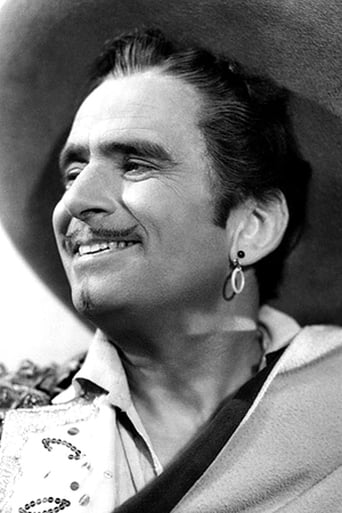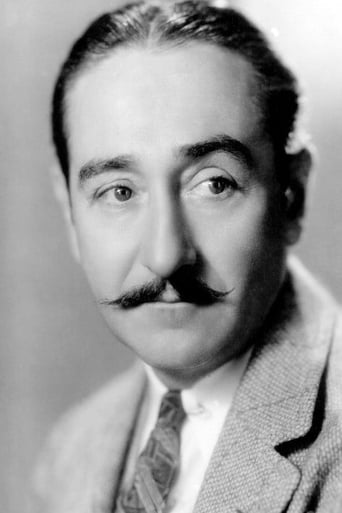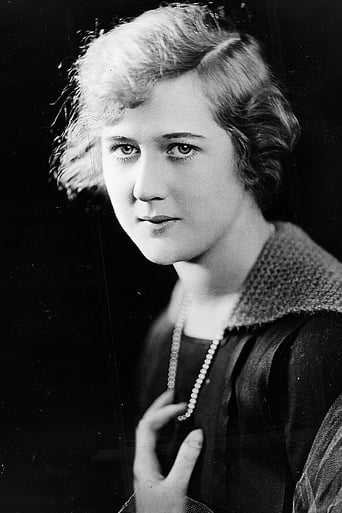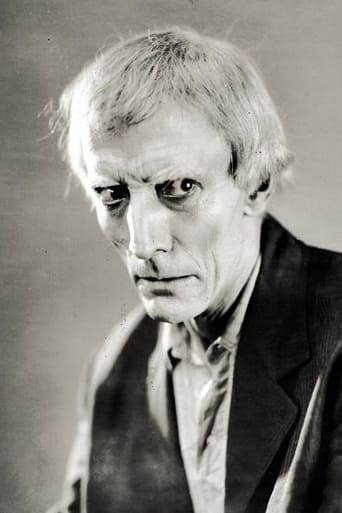MoPoshy
Absolutely brilliant
InformationRap
This is one of the few movies I've ever seen where the whole audience broke into spontaneous, loud applause a third of the way in.
Hayden Kane
There is, somehow, an interesting story here, as well as some good acting. There are also some good scenes
Calum Hutton
It's a good bad... and worth a popcorn matinée. While it's easy to lament what could have been...
avrumeleh
I had the good fortune to watch this film. The story is engaging and the acting was...well, given the difference from today's acting to which I, like many others, are used...nevertheless just fine, even if of the kind we might expect to see in a silent action/adventure. Fairbanks is interesting and enthusiastic and whether or not he throws his arms up more than, in reality, any human being in his role's shoes would, is wonderful throughout the film. But, one thing that captured my attention even more than all the rest is the set and scenery. Filmed entirely in the USA, using a studio for its sets, it strikingly, consistently captures the atmosphere and feeling of Paris and other places in France, indoors and out, that one would expect for the 17th century times during which the story takes place. It actually would, I think, appear to any reasonable eye to have been filmed in real time. This is cinema at its very best in that regard, not to mention others. Fabulous...just fabulous in every detail.
TheLittleSongbird
Another great Douglas Fairbanks film, not one of his best but still hugely entertaining. As an adaptation it is rather abridged, the details and spirit are there but there are versions since that have had much more depth to characterisation and such, the musketeers here are still very fun to watch but can feel like window-dressing. However, as a film and a stand alone there is plenty to love. Aside from the abridgements the only real misgiving was the rushed ending. The Three Musketeers though is still beautifully photographed and the costumes and sets equally evocative and lavish. It is wittily written, a lot of chat especially for a silent film but it has the Dumas spirit and none of it feels like irrelevant filler. As well as rousingly scored, there are three scores available one from 1921 and the others from 1996, the most fitting of the three is Louis F. Gottschalk's from 1921. The story is still diverting and goes at a crisp pace, with lots of twists and turns along with a real sense of adventure, excitement and suspense, basically all the ingredients for a great period adventure. The action sequences are highly athletic with lots of exciting bravado, it is edge-of-the-seat stuff with no signs of clumsiness or predictability. Fairbanks is great, he is full of charisma with touches of arrogance, wit and sparkling humour and tackles his stunts with a real effortless ease. Margarite De LaMotte is a touching Constance and Barbara La Marr a sensual and haunting Milady DeWinter. Adolphe Menjou is appropriately cruel and the Musketeers are well-played, but aside from Fairbanks the standout in the acting department was Nigel De Brulier as a sly and malevolent Richelieu. Overall, the 1973 Richard Lester version is still the definitive adaptation of The Three Musketeers but if we're talking about adaptations being judged on their own this is one of the better and most enjoyable ones, apart from the Burbank Films Australia animated version and the updated one from the Asylum I don't think any of the adaptations are really terrible(yes that is including the 1993 film). 9/10 Bethany Cox
Steffi_P
What you see at this point in cinema's history is the maturing of various formulas once considered frivolous. Griffith had done it in the mid-teens with dramatic film-making as a whole. Chaplin's The Kid had shown how slapstick could be melded with powerful storytelling. And now it was the turn of Douglas Fairbanks to develop his unique brand of adventure comedies into the realm of grand mythmaking.Fairbanks had already reinvented his screen persona with the groundbreaking Mark of Zorro, transferring his over-the-top athleticism and comic timing to the world of romantic adventure. Mark of Zorro is amazing, but it is also something of an experiment; not too extravagant and quite straightforward in storyline. After the success of Zorro, his confidence bolstered (not to mention his coffers a little fuller), Fairbanks made his follow-up The Three Musketeers a far more lavish production, as well as allowing more time for characterisation and subplot. In other words, this was an attempt to move beyond simple genre antics and present a swashbuckler that was also a sweeping historical epic.The broader canvas of The Three Musketeers allows for greater freedom of expression for its director Fred Niblo, who had also filmed Zorro. Niblo was an expert at balancing rhythm and motion in crowd scenes, but was also a great dramatic director. Here he gets to show off both these abilities, providing a realistic and constantly moving backdrop with the masses of extras at his disposal, yet also allowing the more emotional scenes to play out at a steady pace, giving them dignity and bringing out naturalism in the performances. He still recognises however that this is first and foremost an action picture. He gives a unique look to every action shot, sometimes putting figures in the background, other times foregrounding them, sometimes having them move towards the camera, other times across the frame. A great shot is the one in which Fairbanks steals food from the cardinal troops. The guards are placed in the foreground at the right of the frame; Fairbanks appears on the left in the background. This arrangement focuses us on Fairbanks, and the depth of his position also allows him room to do his stunts without having to move the camera or change angle.Like Chaplin, Fairbanks always ensured that he was the star of the show and centre of attention, but in this more generous production he does allow some room for great supporting players, confident that they will make the picture more enjoyable without stealing it. Of note here are George Siegmann (Porthos), who can mostly be seen playing villains for Griffith, but here gets to show off his comedy skills - check out the casual way he wipes his sword and saunters off after dispatching a guard - and Eugene Palette (Aramis), also a great comedy player, and worth mentioning simply because it's interesting to see him without the huge belly he had acquired by his 30s heyday. Other than that Adolphe Menjou is great as usual, although he expresses far too much confidence and smugness for the puppet monarch he portrays. Fairbanks's regular leading lady Marguerite De La Motte is not bad, getting a little more time and space to show her acting range than she did in Mark of Zorro.Still, there is a problem with The Three Musketeers, one which arises from its larger scale and dramatic pretensions - it's a bit slow. The screenplay goes to lengths to allow Fairbanks's character to gradually emerge, and takes time to set the scene, which is all fair enough, except that this is done at the expense of pacing. The first ten minutes are used up establishing the political intrigue, and it's a full thirty-eight minutes before we get to the first real action sequence. While I agree it's a good idea to keep us in suspense before showing off D'Artagnan's fighting skills, the build-up would work much better if we were treated to a small burst of action at the beginning - a "hook", screenwriters call it. Also the best fight scenes are weighted to the middle of the story, robbing the picture of a satisfying finale. The Mark of Zorro, although it is far more simplistic, at least has a continuous frenetic pace that makes it extremely watchable. Nevertheless, The Three Musketeers did settle once and for all the character of Doug Fairbanks, a character that was the same no matter what name it went by - that of the mythical, ever-living hero.
Craig Smith
Douglas Fairbanks knew how to be in the middle of the action. In all the scenes he is in it is go, go, go. He never walks when he can run, jump, even fly. Fairbanks was very athletic and he shows those skills in the movie. Very rarely in this film does he stand still and that is not for long. When he is in a scene there is always going to be plenty of action.The basic plot is that Fairbanks wants to become one of the King's musketeers and in the process finds himself involved in protecting the Queen's honor. The movie is a bit overlong and I found myself having troubles at time following the plot which made the move drag somewhat. But when there was action everything changed. The film comes alive during the scenes involving sword play and when Fairbanks is trying to get back to the Queen from England. And when all is said and done Fairbanks gets his wish and becomes (as you know he will) a Musketeer!




